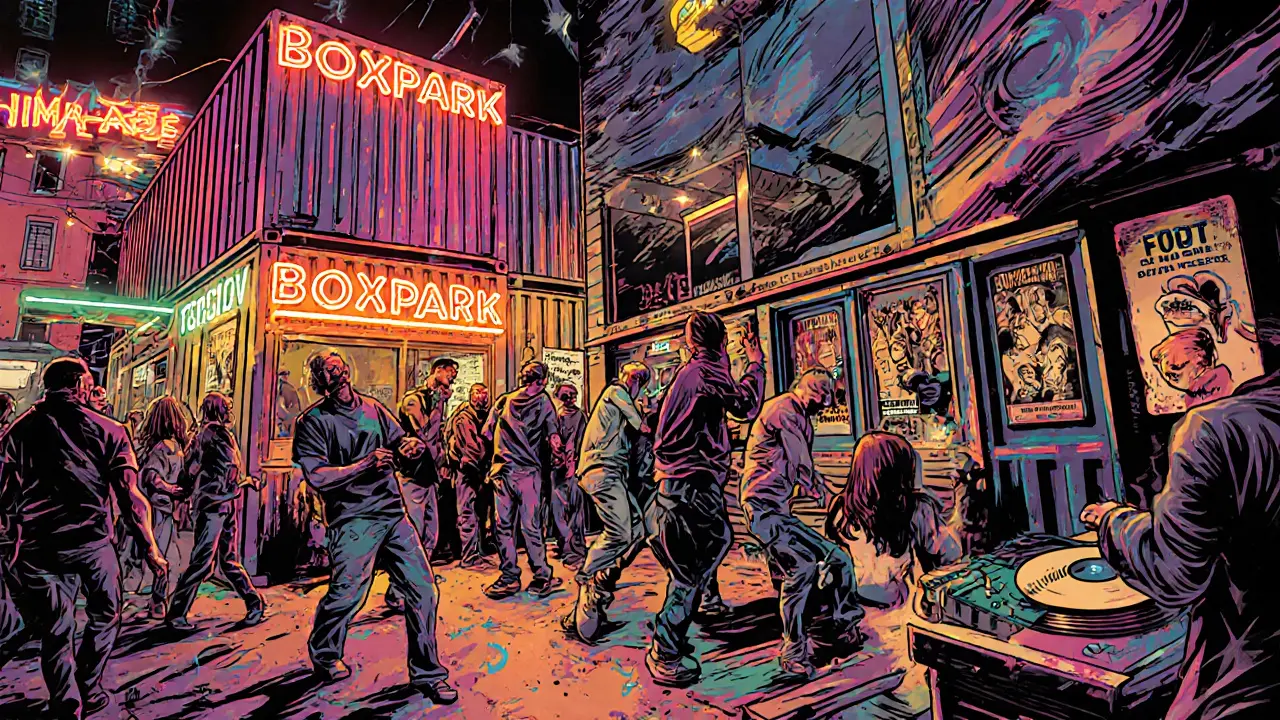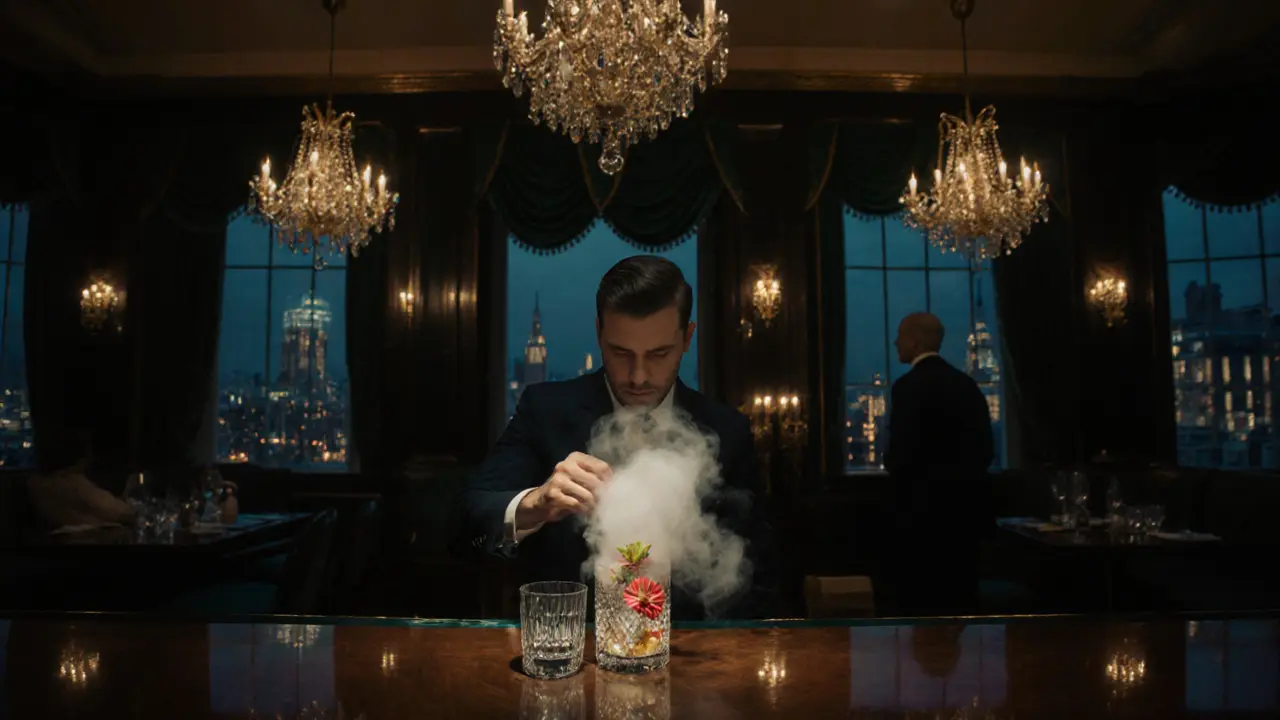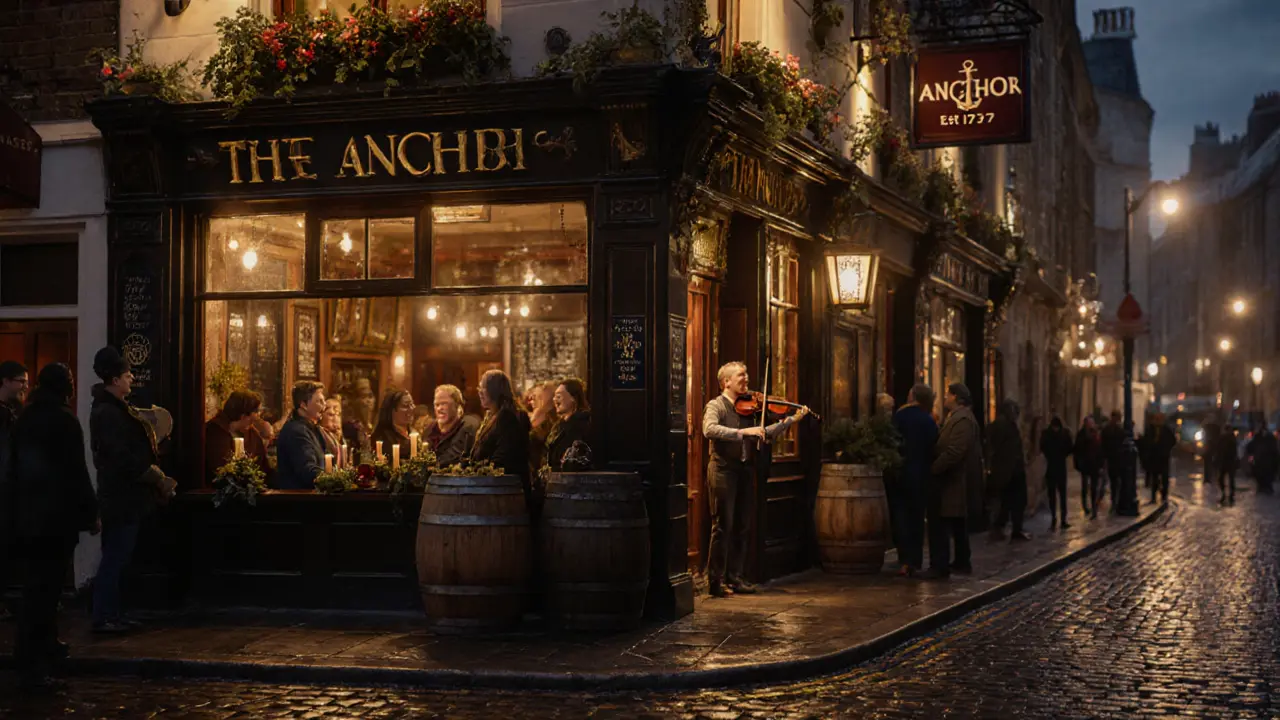London doesn’t sleep - and if you’re visiting from abroad, you’ll quickly learn why. From hidden gin dens in Shoreditch to rooftop bars with skyline views, the city’s nightlife isn’t just loud or trendy. It’s layered, diverse, and surprisingly easy to navigate - if you know where to look.
Start with the classics: pubs that feel like home
Many international visitors assume London nightlife means clubs and loud music. But the real heartbeat? The pub. Not the tourist traps near Trafalgar Square, but the old-school ones locals swear by. The Anchor in Bankside, opened in 1737, still serves real ales from casks and has a back room where musicians play folk tunes on weekends. The Duke of Cambridge in West Kensington is a 19th-century gem with dart boards, sticky floors, and a landlord who remembers your name after one visit. These aren’t places you go to be seen. They’re places you go to feel like you belong.
Pro tip: Ask for a “real ale” or “cask bitter.” If they give you a lager without asking, walk out. Real pubs don’t serve everything on tap.
Shoreditch: where creativity meets chaos
If you want to see London’s youth culture in full swing, head to Shoreditch. It’s not one spot - it’s a whole neighborhood that turns into a living art installation after dark. Start at The Breakfast Club, a former 1980s bank turned into a bar with neon signs, vinyl records spinning, and cocktails named after British punk bands. Then walk five minutes to Boxpark Shoreditch, a maze of shipping containers housing craft beer spots, street food stalls, and pop-up DJs. On Friday nights, the whole street fills with people dancing on benches, drinking cider from plastic cups, and laughing like they’ve known each other for years.
Don’t miss The Old Blue Last, a basement venue that books underground bands from Berlin, Tokyo, and Lagos. You won’t find this on any tourist list. But if you ask a local for “the best live music you’ve never heard of,” this is where they’ll send you.
Soho: the wild heart of London
Soho is where London’s nightlife got its reputation. It’s crowded, bright, and unapologetically loud. But it’s also where you’ll find the most diverse crowd - tourists, artists, drag performers, expats, and old-school jazz lovers all sharing the same pavement.
The French House on Dean Street has been a fixture since 1912. It’s tiny, smoky, and always full. The cocktail menu is simple: gin and tonic, whiskey, or a pint of lager. But the vibe? Priceless. You’ll hear French, Spanish, Russian, and Arabic spoken in the same conversation.
For something louder, try The Eagle in Soho. It’s not a gay bar - it’s a place where everyone feels welcome. The music changes every night: disco on Tuesday, house on Thursday, reggae on Saturday. The staff don’t ask for ID unless you look under 25. And if you’re lucky, you’ll catch a drag show that costs £5 and feels like a Broadway premiere.

Mayfair and Knightsbridge: upscale but not stuffy
Not everyone wants to dance on a table. Some just want a quiet cocktail with a view. That’s where Mayfair and Knightsbridge come in. These areas are quieter, more polished - but far from boring.
The Connaught Bar in Mayfair is often ranked among the world’s best. It’s not just about the price - it’s about the experience. Bartenders craft cocktails using house-infused spirits, edible flowers, and smoke you can see but not touch. A drink here costs £22, but you’ll remember it for years.
For something more relaxed, try The Ritz Bar. No dress code, no pretension. Just a grand room, soft jazz, and a gin and tonic served with a side of history. The Ritz opened its doors in 1906. The bar still uses the same crystal glasses.
Clubs: where to go when you want to move
London’s club scene isn’t just about big names. It’s about niche. You don’t need to queue for 45 minutes outside a venue with a celebrity DJ. You just need to know where to look.
Fabric in Farringdon is the most famous. It’s been running since 1999 and still draws crowds from across Europe. The sound system is legendary. The dance floor? Always packed. But it’s not just techno. They host everything from deep house to jungle reissues. Cover is £15 before midnight, £20 after. Cash only at the door.
For something newer, try Printworks - a converted printing plant in Rotherhithe. It’s massive, industrial, and open until 6 a.m. on weekends. The lighting is designed to feel like you’re inside a film set. No VIP tables. No bottle service. Just music, sweat, and strangers becoming friends by 3 a.m.
And if you’re into underground electronic music, The Cross in Dalston is a must. It’s small, dark, and run by a collective of DJs who only play vinyl. No one takes photos. No one checks your phone. You just dance until your feet hurt.
What to avoid
Not every place with a neon sign is worth your time. Stay away from “London Experience” tour buses that drop you off at overpriced bars with fake bouncers. Skip the clubs that charge £30 just to get in and serve you a plastic cup of cheap vodka. And don’t fall for the “free entry” traps - they’re usually just waiting for you to buy overpriced drinks.
Also, avoid drinking on the street after 11 p.m. It’s illegal. Police in London don’t mess around. You’ll get fined £90 and lose your night.

How to get around safely
London’s night buses run all night on major routes. The Night Tube runs Friday and Saturday nights on the Central, Jubilee, Northern, Piccadilly, and Victoria lines. Download the Citymapper app - it’s better than Google Maps for night travel. Taxis are safe, but Uber is cheaper. Always check the driver’s name and license plate before getting in.
Most areas are safe after dark, but stick to busy streets. Avoid isolated alleys in Camden or Walthamstow after 2 a.m. If you’re unsure, ask a bar staff member. They know the neighborhood better than any map.
What to expect in 2025
This year, London’s nightlife got even more global. New venues opened by chefs from Lagos, Tokyo, and Mexico City now serve cocktails paired with street food. You can sip a mezcal negroni while eating tacos from a stall run by a former chef from Oaxaca. Or try a Japanese whiskey sour made with honey from a hive in the London Wetland Centre.
There’s also a rise in “quiet nights.” Bars like The Quiet Woman in Peckham offer low lighting, no music, and books on the shelves. You can come alone, read, and order tea or a single malt. It’s the opposite of a club - but just as much a part of London’s soul.
Final tip: talk to people
The best night out in London isn’t planned. It’s found. Ask the bartender what they’re listening to. Ask the person next to you at the bar where they’re from. Say “I’m visiting - where would you go?” You’ll get five different answers. All of them will be right.
Is London nightlife safe for international visitors?
Yes, London is generally safe for tourists at night, especially in central areas like Soho, Shoreditch, and Camden. Stick to well-lit streets, avoid isolated alleys after 2 a.m., and use licensed taxis or the Night Tube. Police presence is common in nightlife zones, and most venues have security. Just don’t drink on the street - it’s illegal and can lead to a fine.
Do I need to book ahead for clubs and bars in London?
For big clubs like Fabric or Printworks, it’s smart to book online in advance - especially on weekends. Smaller bars and pubs rarely require reservations. Some rooftop bars, like The Rooftop at The Standard or 11th Floor at The Hoxton, take bookings for cocktails. Walk-ins are welcome, but you might wait. Always check the venue’s website before heading out.
What’s the legal drinking age in London?
The legal drinking age in the UK is 18. You’ll be asked for ID if you look under 25. Acceptable forms include a passport, driving license, or proof-of-age card. No one under 18 can buy alcohol - even if they’re with an adult. Some venues allow minors in during early evening hours, but not past 9 p.m. unless it’s a family-friendly space.
How much should I budget for a night out in London?
It depends. A pint of beer in a pub costs £5-£7. A cocktail in a trendy bar is £12-£18. Club entry ranges from £10-£20, with drinks at £8-£12 each. If you’re doing a full night - pub, dinner, club, and a taxi - plan for £50-£100. You can do it cheaper by sticking to pubs and using night buses. Skip the bottle service - it’s overpriced and rarely worth it.
Are there any free nightlife options in London?
Yes. Many pubs host free live music on weeknights - jazz, folk, or acoustic sets. Check listings on Time Out London or The Londonist. Some venues like The Jazz Café in Camden offer free entry before 10 p.m. on Mondays. Street markets like Broadway Market and Columbia Road come alive at night with food stalls and pop-up performances. You can spend nothing and still have a great night.
What’s the best time to go out in London?
Most places don’t get busy until 10 p.m. Pubs fill up around 11, clubs hit peak at midnight. If you want to avoid crowds, go earlier - 9-10 p.m. is perfect for cocktails or live music. Weeknights are quieter, weekends are packed. Friday and Saturday nights are the busiest, especially in Soho and Shoreditch. If you’re flexible, Thursday nights are often the sweet spot: lively but not overwhelming.
